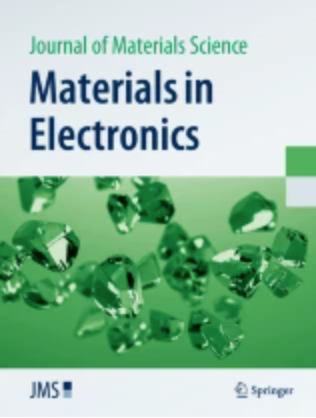Effect of Vanadium doping on the structural, vibrational, optical, dielectric, ferroelectric and electrical properties of Na0.5Bi0.5TiO3 ceramics
Abstract
In this report, we have studied the effect of Vanadium (V) substitution on the various properties such as structural, microstructural, morphological, optical and electrical properties of (Na0.5Bi0.5)Ti(1−5x/4)VxO3 (0.00 ≤ x ≤ 0.15) (NBVT) ceramics. The polycrystalline samples are synthesized using solid-state route followed by high temperature microwave sintering technique. Room temperature XRD analysis along with structural Rietveld refinement technique confirms the existence of perovskite single-phase rhombohedral structure (R3c space group) for Na0.5Bi0.5TiO3 (NBT) & NBVT. The obtained results are subsequently corroborated by Raman analysis. The FESEM image of NBVT compounds display the uniform, distinct microstructure, scattered voids and reduction in average grain size with increased V-concentration. The widening in the band gap energy of NBT ceramic is observed upon V doping. A well saturated ferroelectric hysteresis loop NBVT suggests existence of ferroelectric behavior in the material. The temperature dependent dielectric constant shows existence of ferroelectric phase transition and shifted towards low temperature side upon increase in V-concentration. A low dielectric loss at high frequencies makes the material suitable for microwave device applications. Impedance and modulus formalism analysis of electrical data revealed a dominant non-ideal bulk contribution to the compound’s overall electrical response and negative temperature coefficient of resistance (NTCR) behavior. To determine the conduction mechanism, the universal power law is used to model the frequency dependent ac conductivity data. To figure out the type of charge carriers involved in various electrical processes, activation energies are calculated from temperature dependent impedance data.

 求助内容:
求助内容: 应助结果提醒方式:
应助结果提醒方式:


